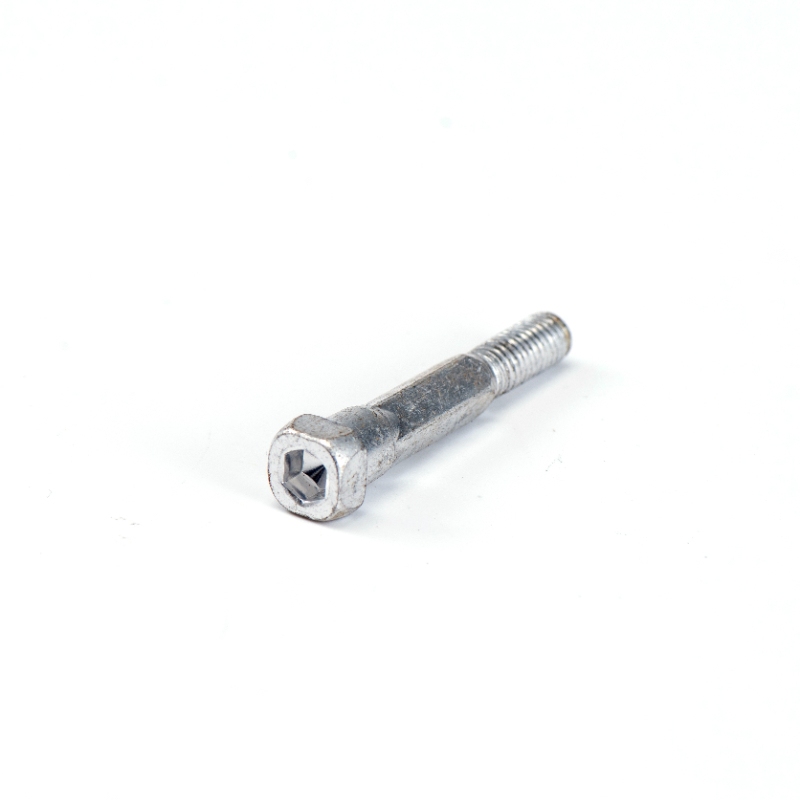What Are Square Head Set Screws?
Square head set Screws are specialized Fasteners designed to secure an object within or against another object, typically without the use of a nut. These Screws feature a square-shaped head that provides superior torque transmission compared to standard hexagonal or Phillips heads. The square drive system offers a 90° engagement angle, which minimizes cam-out (slippage) during installation and allows for higher torque application—typically ranging from 20% to 30% greater than comparable hex drives.
Key technical characteristics of square head set screws include:
Material: Typically manufactured from grade 5 (SAE J429) or grade 8.8 (ISO 898-1) alloy steel, with tensile strengths of 120,000 psi (825 MPa) and 150,000 psi (1,034 MPa) respectively
Hardness: Rockwell hardness of C25-C34 for standard carbon steel variants
Thread Types: Available in UNC (coarse), UNF (fine), and metric thread pitches with diameters ranging from #2 (0.086") to 1" (25.4 mm)
Drive Size: Square recess dimensions conform to ASME B18.3 standards, with common sizes being 1/8", 3/16", and 1/4"
Point Styles: Multiple tip configurations including cup point (most common), flat point, cone point, and knurled cup point, each providing different gripping characteristics

Primary Applications
The unique design characteristics of square head set screws make them particularly suitable for demanding mechanical applications:
1. Industrial Machinery
In high-vibration environments such as CNC machines (spindle retention), printing presses (roller alignment), and conveyor systems, square head set screws provide superior resistance to loosening. The cup point variant can generate up to 3,000 psi (20.7 MPa) of surface pressure when properly torqued, creating permanent deformation in the shaft for maximum holding power.
2. Automotive Components
Used in steering column adjustments (torque values typically 15-25 Nm), gearbox assemblies, and wheel hub retention systems. The square drive's positive engagement is critical in spaces where access is limited and tool slippage could cause damage to surrounding components.
3. Aerospace Fastening
Special high-temperature alloys (such as A-286 stainless steel with 160,000 psi tensile strength) are used in aircraft control linkages and engine components where vibration resistance and material integrity at temperatures up to 1,300°F (704°C) are required.
4. Electrical Equipment
Square head set screws with non-magnetic properties (phosphor bronze or 300 series stainless steel) are employed in sensitive electronic enclosures and MRI equipment where magnetic interference must be minimized.
Maintenance Procedures
Proper maintenance ensures optimal performance and longevity of square head set screws:
Installation Best Practices
Always use properly sized square drive bits (ASME B107.5 compliant) to prevent rounding of the drive recess
Apply appropriate torque based on ASME B18.3.1M torque tables—for example, a 1/4"-20 UNC grade 5 screw requires 10 ft-lbs (13.6 Nm) dry torque
For critical applications, use thread locking compounds (Loctite 242 for medium strength, 271 for high strength) following manufacturer's cure time specifications
Preventive Maintenance
Inspect screws every 500 operating hours in high-vibration environments using ultrasonic tension measurement to detect loosening
Clean threads with wire brushes (stainless steel for steel fasteners, brass for softer materials) before reinstallation
Apply anti-seize compounds (containing 35-65% metallic solids like nickel or copper) in high-temperature applications to prevent galling
Corrosion Prevention
For outdoor applications, specify screws with hot-dip galvanized (3-8 mil thickness) or Dacromet coatings providing 1,000+ hours salt spray resistance
In marine environments, consider 316L stainless steel with passivation treatment (ASTM A967) for maximum chloride resistance
Replacement Guidelines
Replace screws showing >10% deformation in drive recess dimensions or thread wear exceeding 20% of original profile
Discard any fastener that has been subjected to over-torque exceeding 125% of specification, as this may have caused microstructural damage (hydrogen embrittlement in hardened steels)





